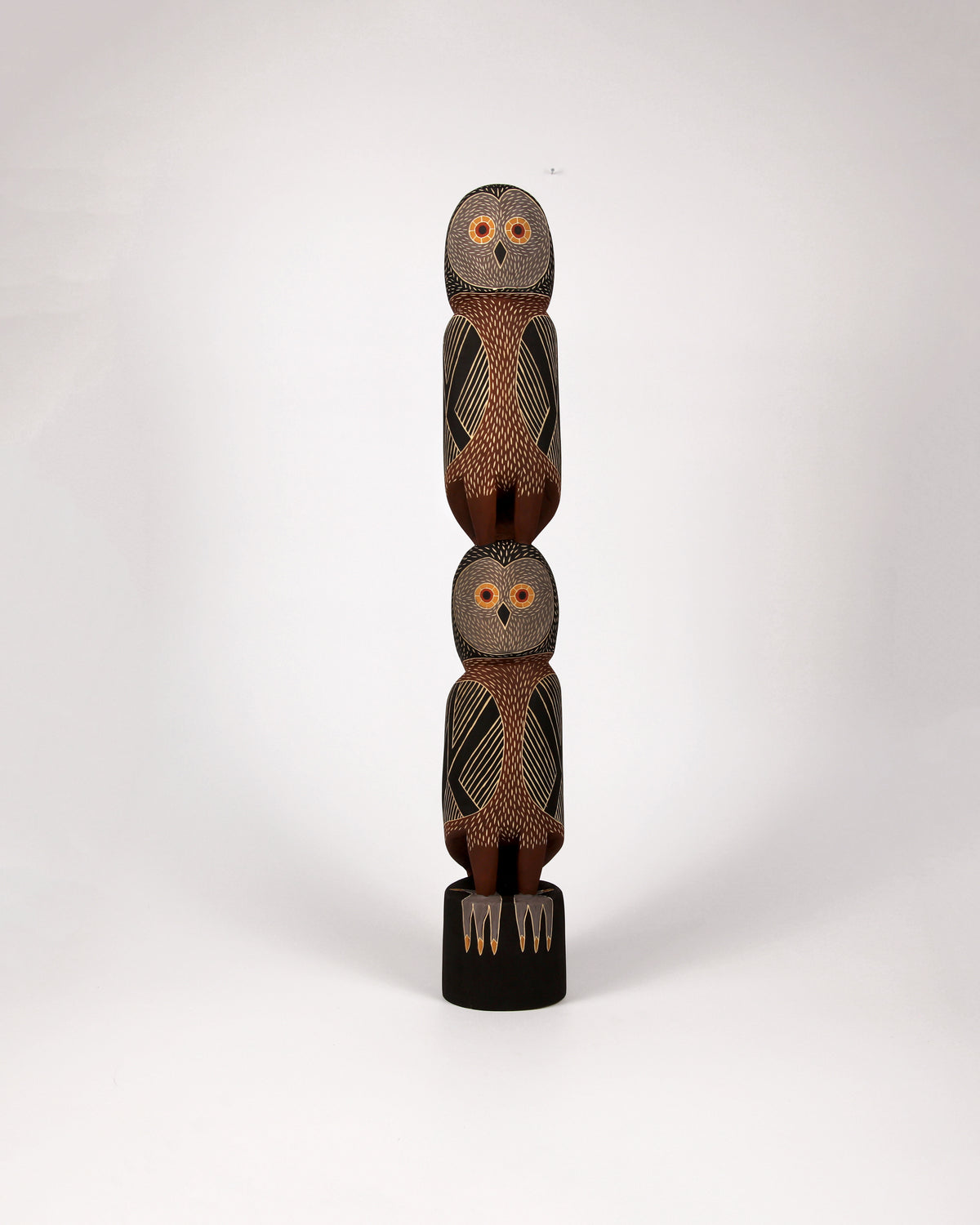Garraŋali 365-23
This is a Maḏarrpa clan painting of the sacred area referred to as Garraŋali where the sacred Bäru (crocodile) nest.
The Maḏarrpa people were led by Wakuthi (born c1921) who remained a powerful and influential man although almost blind and known as “Banbay” - 'blind one' until his death in 2005. In the settng of this coastal outstation, the elements of this painting incorporate themes of fire and water and describe the ancestral events in which Bäru, the crocodile, plays a central role.
Bäru was camped at a fire when his wife Dhamiliŋu, went hunting for Mänyduŋ (snails). Bäru was sleeping and his wife was eating the snails, throwing the empty shells on his head. Bäru became wild and threw his wife into the gurtha (fire).
It was by being burned by the fire following this argument, that Bäru is said to have been scarred badly resulting in the characteristic skin of the crocodile. It also accounts for his wallowing in water to soothe his burns and his continuing fear of fire. Bäru, as an important ancestor of the Yirritja moiety, played a role in naming areas of land belonging to various Yirritja clans.
Bäru said, “My tribe will be ....”, and proceeded to give names to all the places and people. He also went to Maningrida - they have a story for him there but they have different language and different miny’tji (designs). They call themselves Maḏarrpa people. At Roper there are also people who call themselves Maḏarrpa.
Crocodiles never eat food fresh. They take it to a special place called Ŋulwurr or Garraŋali, and let it rot before eating it there later on. This painting is of that site which doubles as nest.
So Garraŋali is the Maḏarrpa clans crocodile nest. The Maḏarrpa call themselves of Bäru. Bäru leaves the beaches of Yathikpa to go up stream to the inland site of Garraŋali. Freshwater wells rise from the black soil plains that sustain an oasis like jungle. King Tides will reach this far creating a sacred fertile and brackish mix. This is where Bäru makes its nest. It is these waters at Garraŋali that contain the Maḏarrpa soul.
This powerful and dangerous place is affected by springs of freshwater and tidal surge from the northern coast of Blue Mud Bay - a place where the two waters mix to become a fertile one. Ancestral Fires came through this area imbued with the powers of Bäru the Ancestral Crocodile - power totem for the Maḏarrpa clan. The waters are sacred because as the Maḏarrpa will tell you - they are from this water and upon death and through appropriate ritual they will return to this font of Maḏarrpa ancestral souls.
Garraŋali is protected as a special place of significance for the Maḏarrpa by the intense heat of the lingering Ancestral Fire and the real presence of Bäru protecting its nests.
The Ḻarrakitj had its traditional use for the Yolŋu of North east Arnhem Land as an ossuary or bone container erected as a memorial to a dead kinsman up to a decade after death. After death the body of the deceased was often ceremonially placed on a raised platform and left to the elements for an appropriate time. The area would then be abandoned until the next stage of the ritual.
This took place once it was determined that the essential eternal spirit of the deceased had completed its cyclical journey to the spring from which it had originated and would in time return again. This might be several years. Whilst the body was ‘lying in state’ others got wind of the death, perhaps by subliminal message and made preparations to journey to the site of mortuary. Usually enough time had elapsed for the bones of the deceased to be naturally cleansed on the platform. The essence of the soul within the bone was made ready for final rites when other outside participants necessary for its safe journey arrived. Ritual saw the bones of the deceased placed within the termite hollowed memorial pole for final resting. Mortuary ritual would end with the placement of the Ḻarrakitj containing the bones standing in the bush. Over time the ḻarrakitj and its contents would return to mother earth.
The ḻarrakitj has often been referred to as the mother’s womb. Once sedentary mission communities were established in Arnhem Land it became impractical to abandon permanent communities and outlawed to expose corpses on platforms. However the cosmology of the Yolŋu and the essence of ritual mortuary ceremony remains just as important. Ḻarrakitj continue to be produced as the equivalent of headstones or to contain the personal effects of a deceased (which might be dangerous unless removed from the living because of the emanations imbued by contact with the deceased).
A further role for this cultural form is as a fine art object and an instructional tool for younger generations. Artworks of this nature have multiple layers of metaphor and meaning which give lessons about the connections between an individual and specific pieces of country (both land and sea), as well as the connections between various clans but also explaining the forces that act upon and within the environment and the mechanics of a spirit’s path through existence. The knowledge referred to by this imagery deepens in complexity and secrecy as a person progresses through a life long learning process.
––
This Ḻarrakitj comes with a custom fitted steel stand.
SHIPPING
Brunswick Street Gallery would be pleased to arrange a quote for shipping if you are unable to collect directly from us.
EXHIBITIONS
Artworks purchased from current exhibitions will be available for collection or shipping after the exhibition has ended.
–
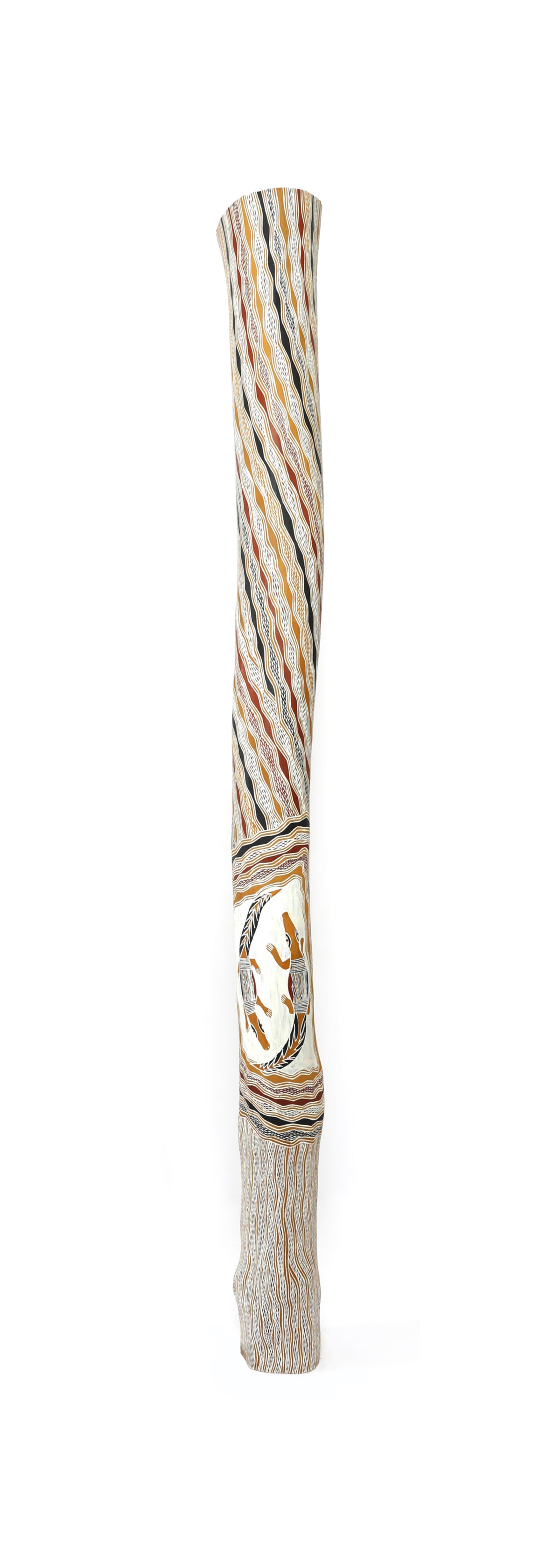

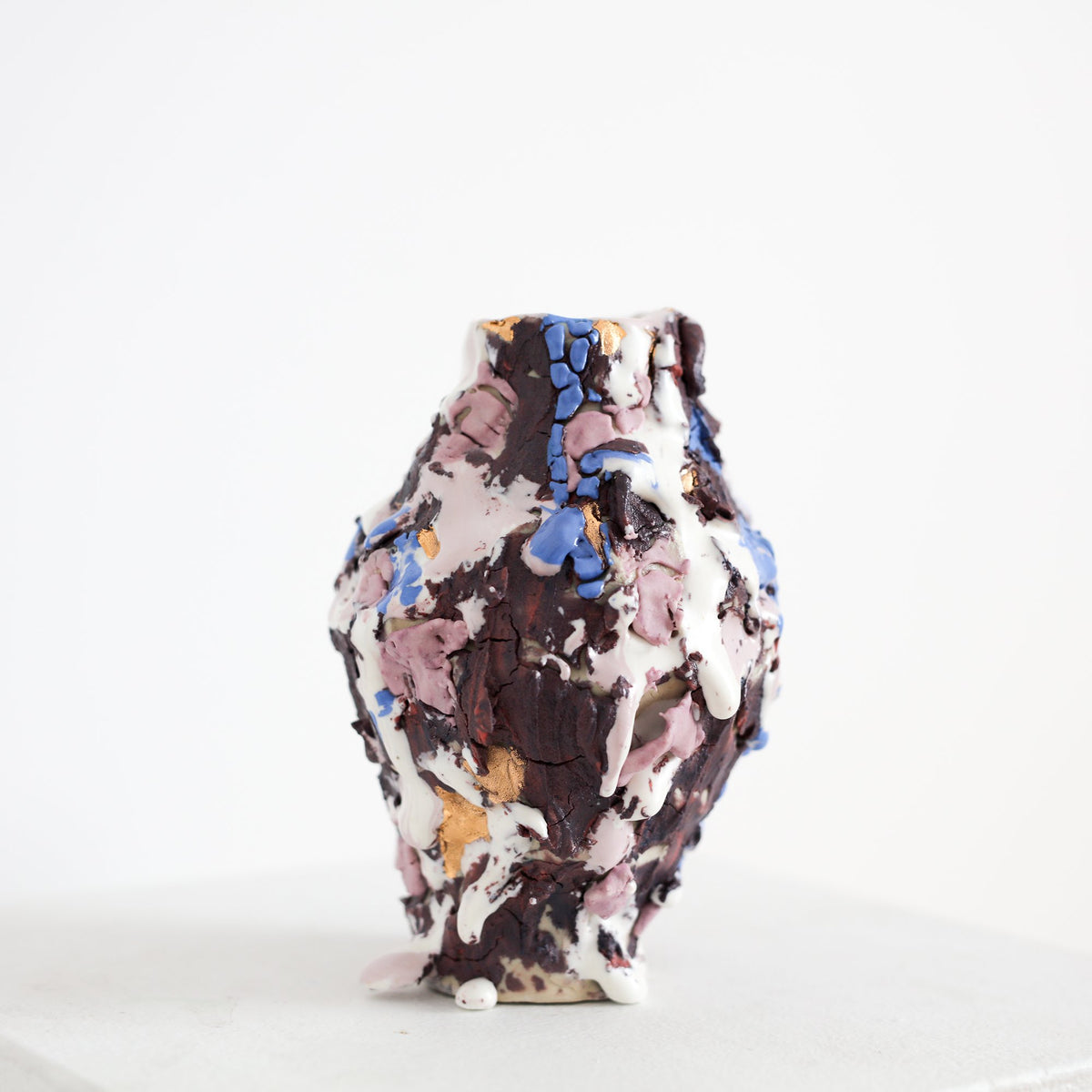
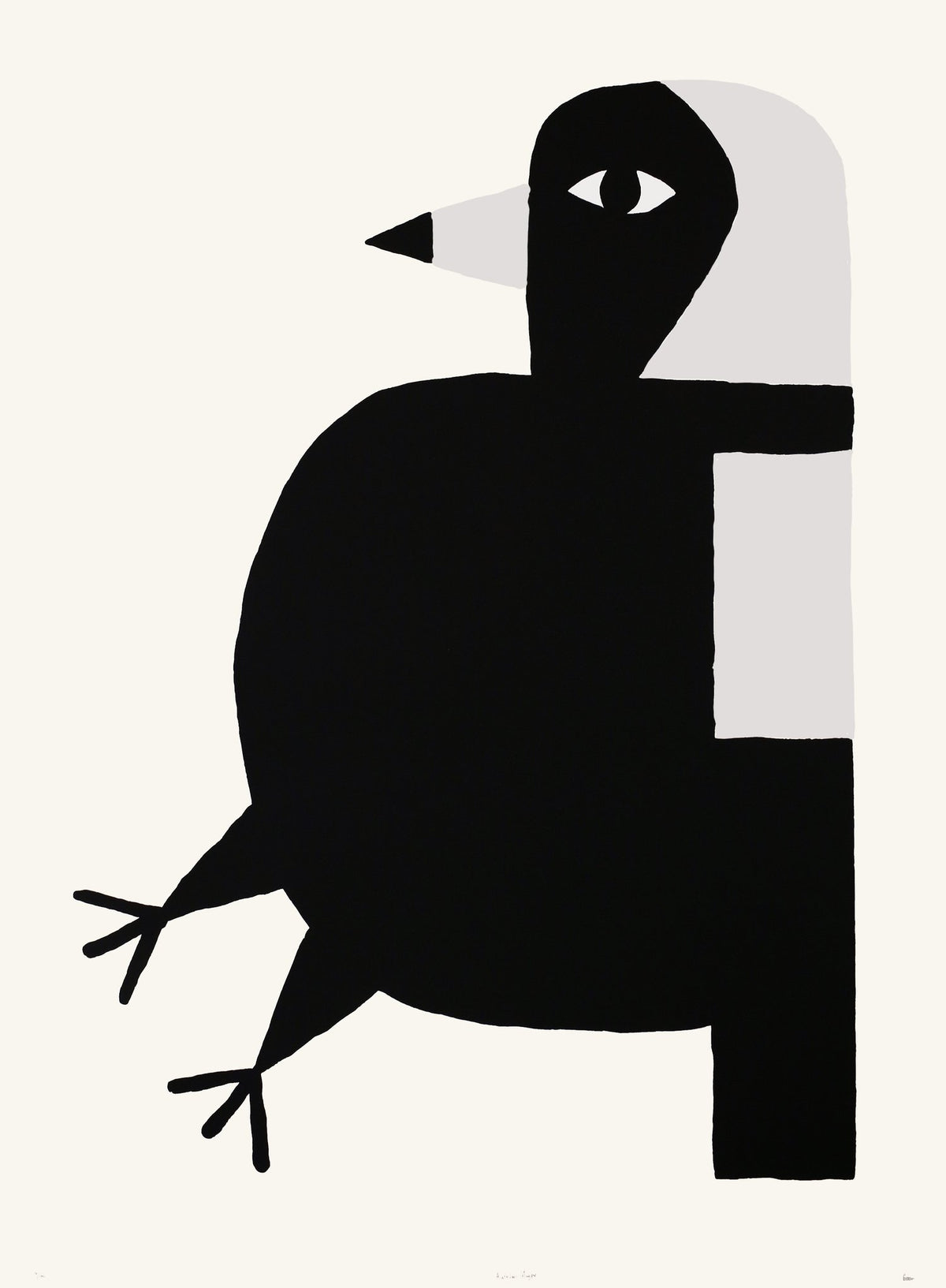
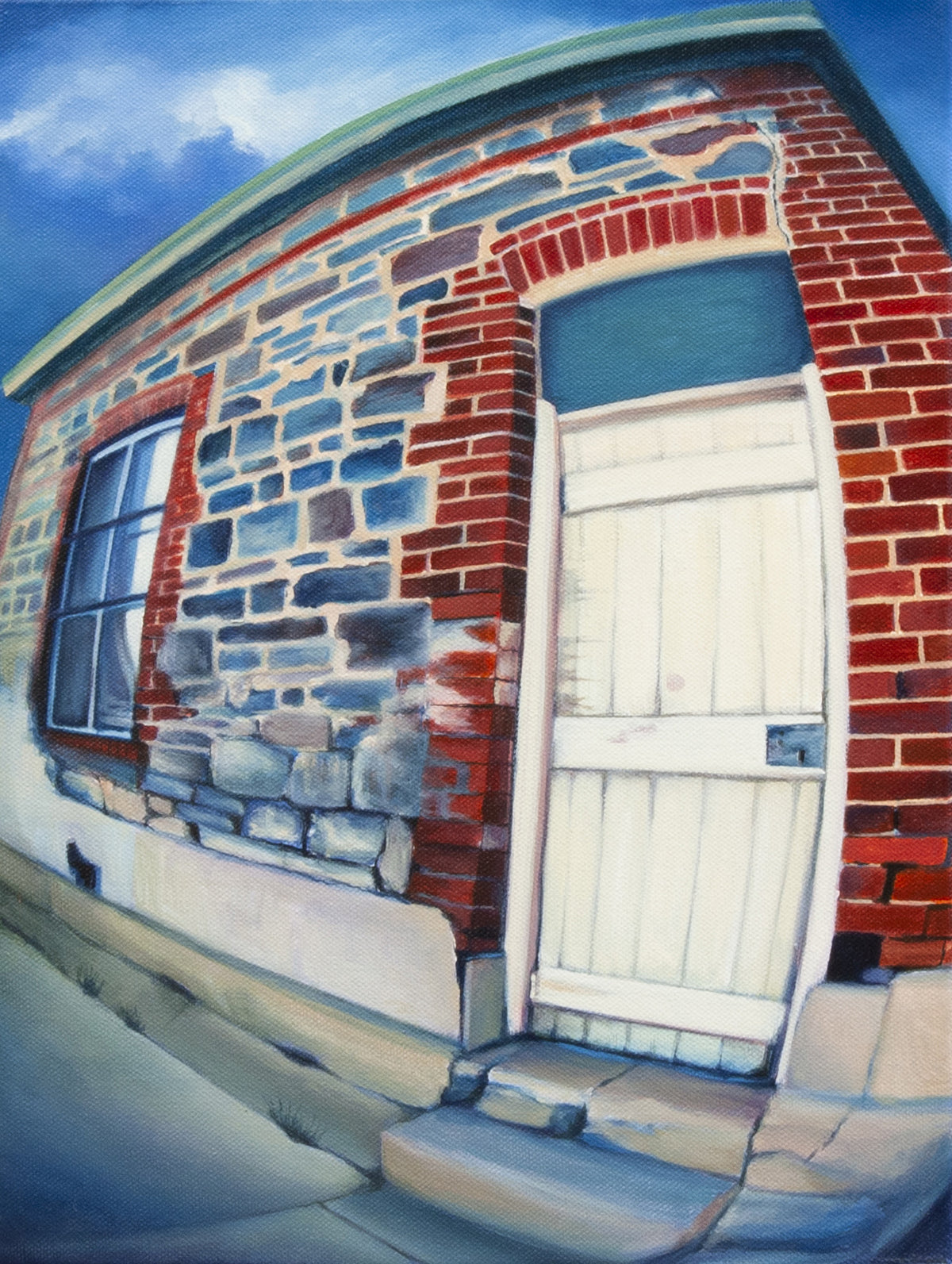
![Graham Rostron | Bininj Binihwokdi: Two people were talking [to each other] 1354-23-5/10](http://brunswickstreetgallery.com.au/cdn/shop/files/GrahamRostron1354-23-5_10.jpg?v=1692688640&width=1200)

